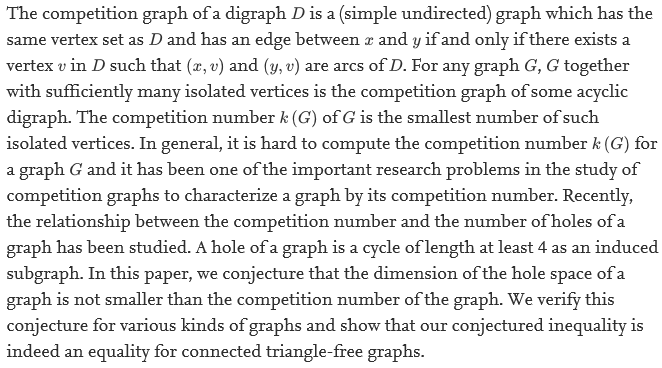논문
ENERGY VARIATIONAL APPROACH TO STUDY CHARGE INVERSION (LAYERING) NEAR CHARGED WALLS
Hyon, Yunkyong.; Fonseca, J.E.;Eisenberg, B.;Liu, C. | Journal of hydrology 17 (2012)
Hyunuk An.; Ichikawa, Y.;Tachikawa, Y.;Shiiba, M. | Journal of hydrology 470-471 (2012)
Soonyoung Yu; Andre J.A. Unger; Beth Parker; Taehee Kim | JOURNAL OF ENVIRONMENTAL MANAGEMENT 100 (2012)
Well-balanced shallow water flow simulation on quadtree cut cell grids
Hyunuk An.;Soonyoung Yu | ADVANCES IN WATER RESOURCES 39 (2012)
Kim, Myoung Nyoun; Ha, Tae Young;Woo, Eung Je;Kwon, Oh In | PHYSICS IN MEDICINE AND BIOLOGY 57 (2012)
Asymmetric information flow between market index and individual stocks in several stock markets
Kwon, Okyu; Oh, Gabjin | EPL 97 (2012)
Intercity express bus flow in Korea and its network analysis
OkyuKwon; Woo-Sung Jung | PHYSICA A-STATISTICAL MECHANICS AND ITS APPLICATIONS 391 (2012)
The competition number of a graph and the dimension of its hole space
Suh-Ryung Kim; Jung Yeun Lee; Boram Park; Yoshio Sano | APPLIED MATHEMATICS LETTERS 25 (2012)
Device Authentication Protocol for Smart Grid Systems Using Homomorphic Hash
Young-Sam Kim; Joon Heo | JOURNAL OF COMMUNICATIONS AND NETWORKS 14 (2012)
Dynamics of macroautophagy: Modeling and oscillatory behavior
Han, K.; Kwon, H.W.;Kang, H.;Kim, J.;Lee, M.S.;Choi, M.Y. | PHYSICA A-STATISTICAL MECHANICS AND ITS APPLICATIONS 391 (2012)















